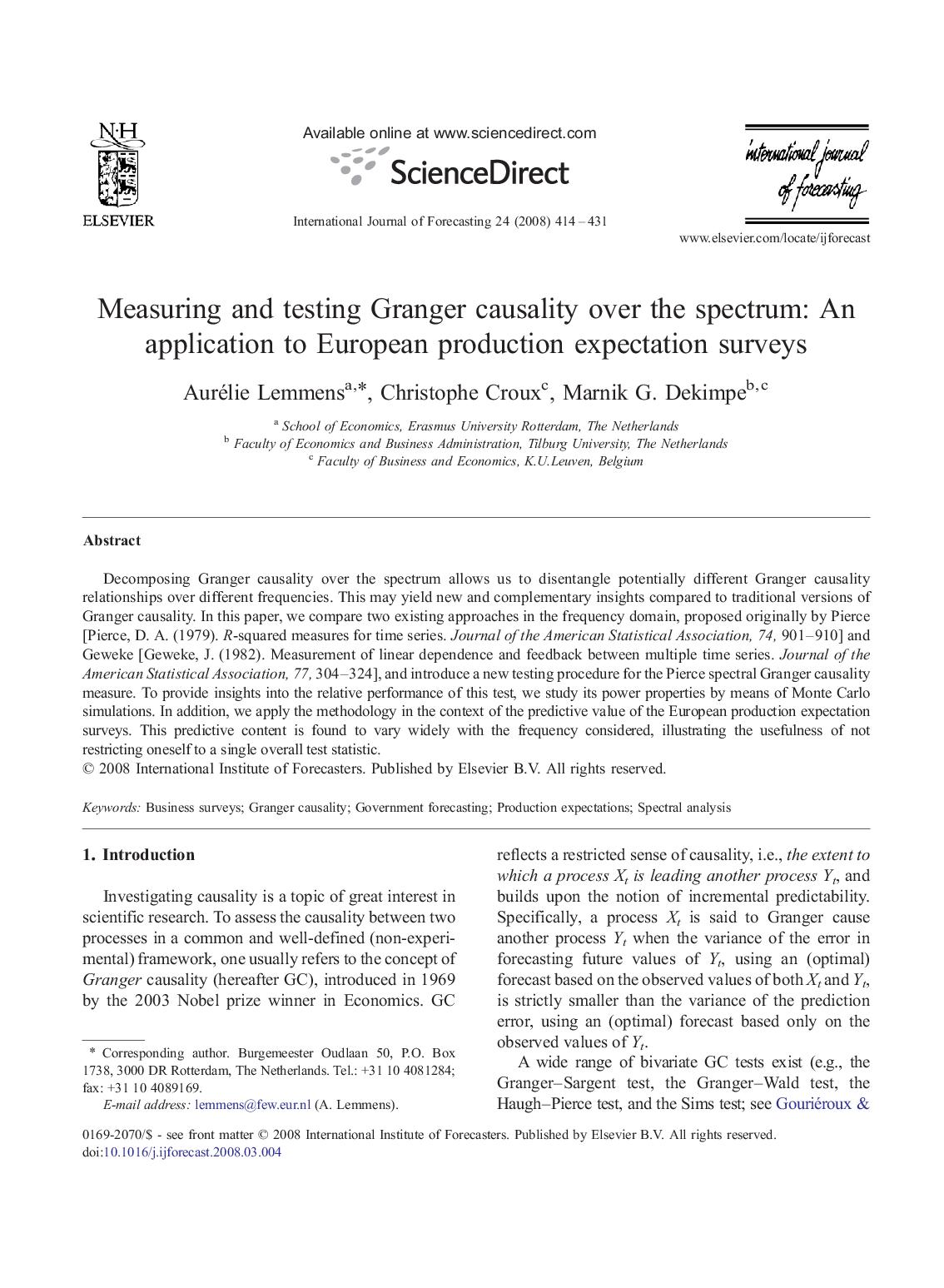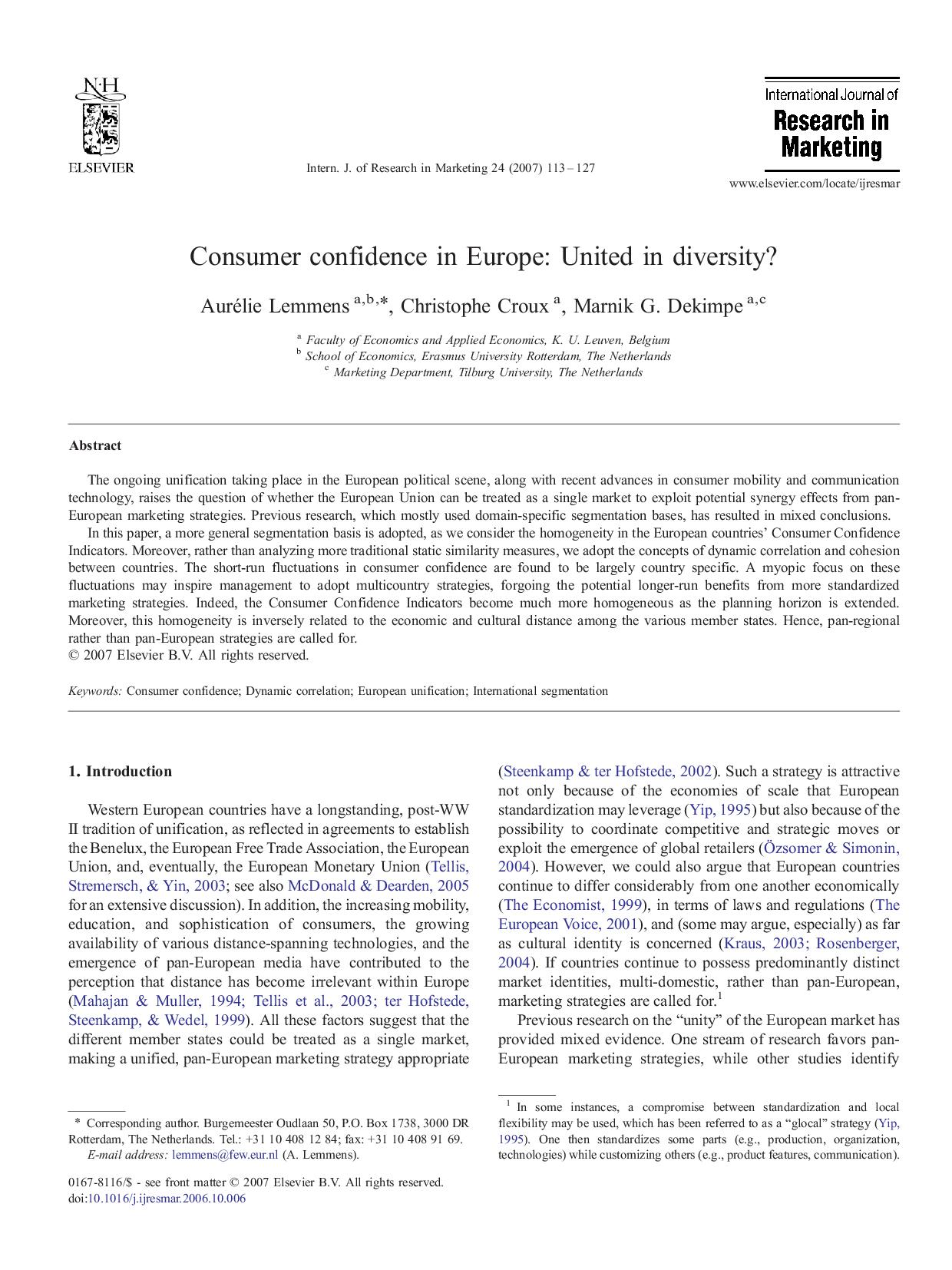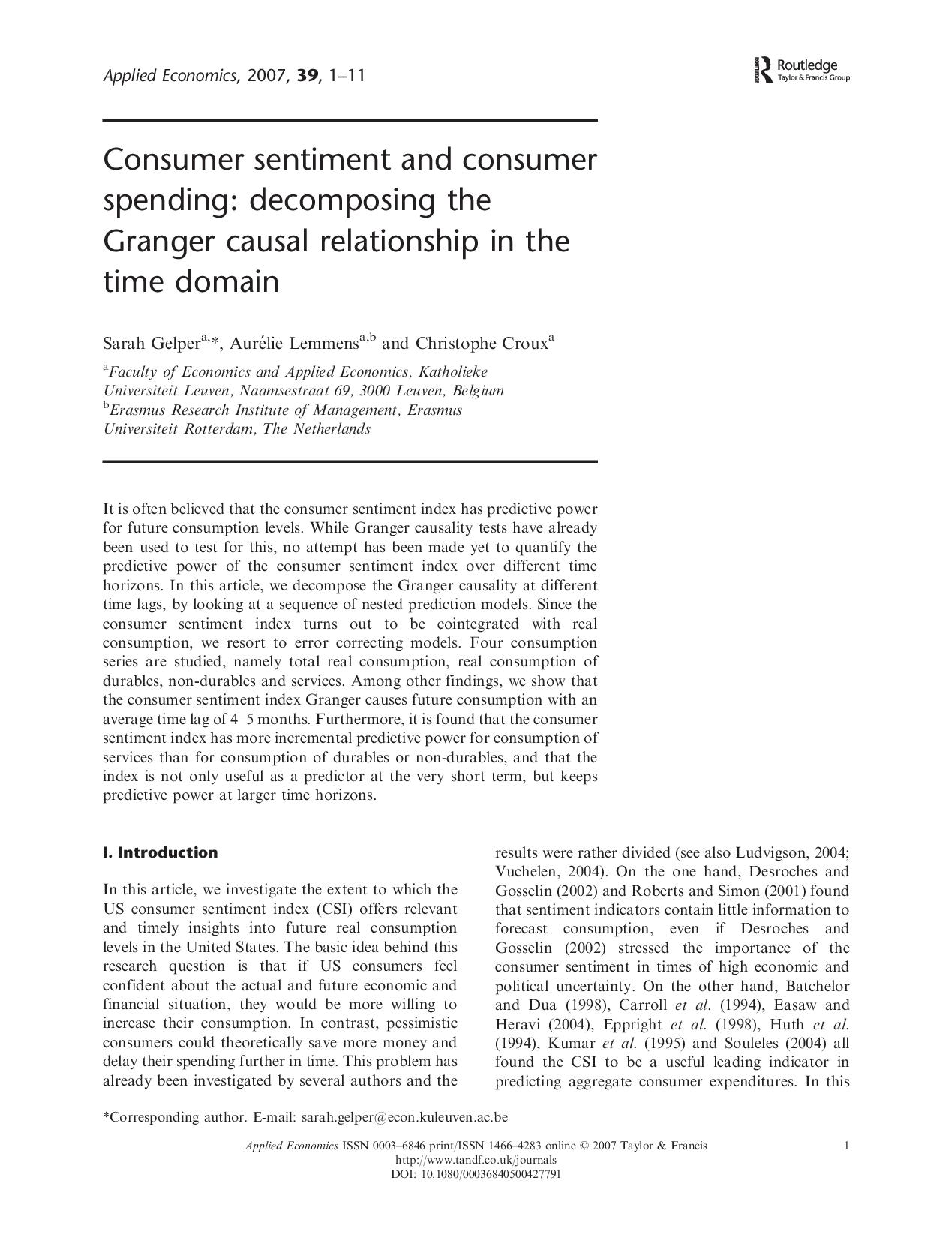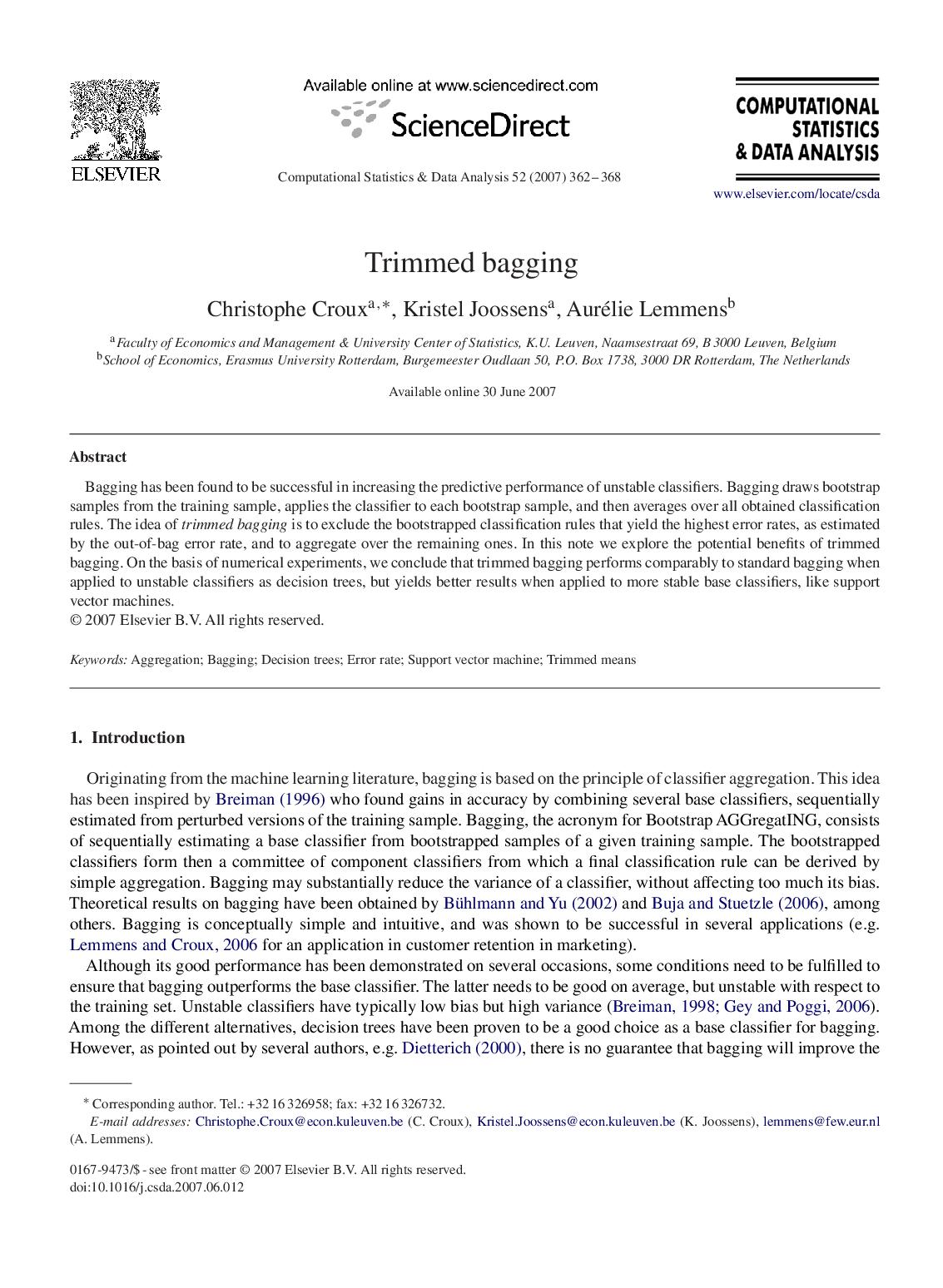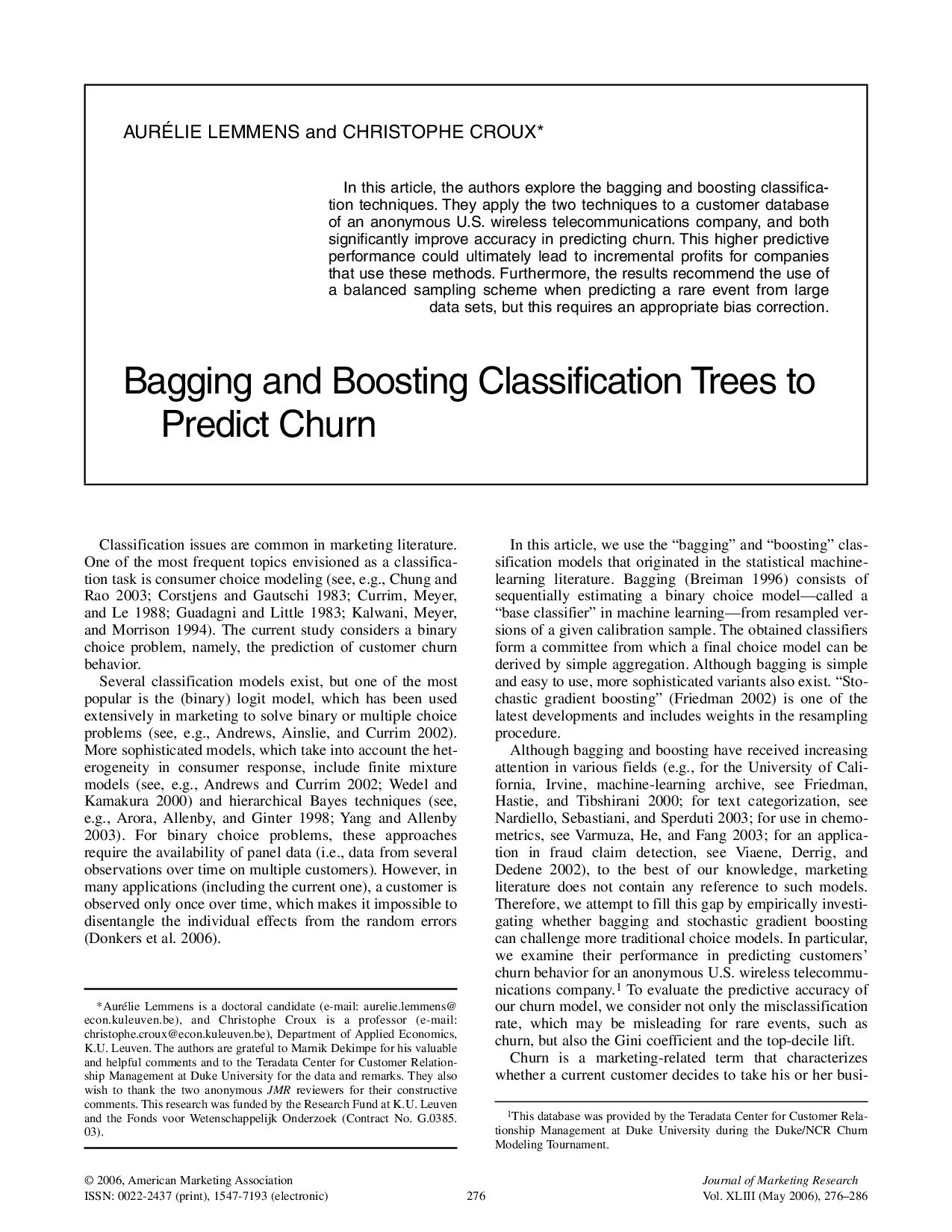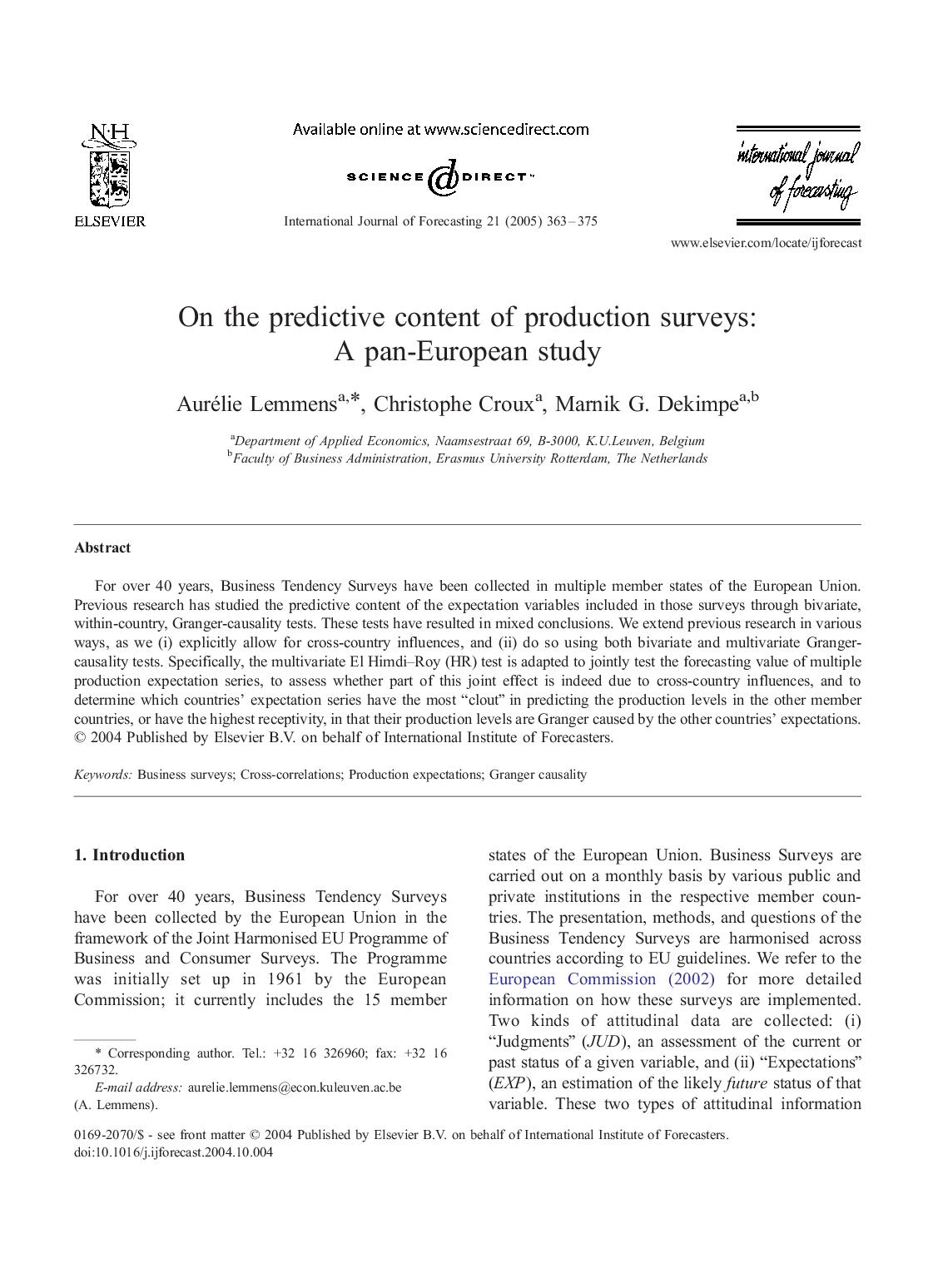Measuring and Testing Granger Causality over the Spectrum: An Application to European Production Expectation Surveys
Decomposing Granger causality over the spectrum allows us to disentangle potentially different Granger causality relationships over different frequencies. This may yield new and complementary insights compared to traditional versions of Granger causality. In this paper, we compare two existing approaches in the frequency domain, proposed originally by Pierce [Pierce, D. A. (1979). R-squared measures for time series. Journal of the American Statistical Association, 74, 901...
Lemmens, A., Croux, C. and Dekimpe, M.G.
2008
Consumer Confidence in Europe: United in Diversity?
The ongoing unification taking place in the European political scene, along with recent advances in consumer mobility and communication technology, raises the question of whether the European Union can be treated as a single market to exploit potential synergy effects from pan-European marketing strategies. Previous research, which mostly used domain-specific segmentation bases, has resulted in mixed conclusions.
In this paper, a more general segmentation basis is adopted, as we consid...
Lemmens, A., Croux, C. and Dekimpe, M.G
2007
Consumer Sentiment and Consumer Spending: Decomposing the Granger Causal Relationship in the Time Domain
It is often believed that the consumer sentiment index has predictive power for future consumption levels. While Granger causality tests have already been used to test for this, no attempt has been made yet to quantify the predictive power of the consumer sentiment index over different time horizons. In this article, we decompose the Granger causality at different time lags, by looking at a sequence of nested prediction models. Since the consumer sentiment index turns out to be cointegrated w...
Gelper S., Lemmens A. and Croux C.
2007
Trimmed Bagging
Bagging has been found to be successful in increasing the predictive performance of unstable classifiers. Bagging draws bootstrap samples from the training sample, applies the classifier to each bootstrap sample, and then averages overal lobtained classification rules. The idea of trimmed bagging is to exclude the bootstrapped classification rules that yield the highest error rates, as estimated by the out-of-bag error rate, and to aggregate over the remaining ones. In this note we explore th...
Croux, C., Joossens, K. and Lemmens, A.
2007
Bagging and Boosting Classification Trees to Predict Churn
In this article, the authors explore the bagging and boosting classification techniques. They apply the two techniques to a customer database of an anonymous U.S. wireless telecommunications company, and both significantly improve accuracy in predicting churn. This higher predictive performance could ultimately lead to incremental profits for companies that use these methods. Furthermore, the results recommend the use of a balanced sampling scheme when predicting a rare event from large data ...
Lemmens, A. and Croux, C.
2006
On the Predictive Content of Production Surveys: a Pan-European Study
For over 40 years, Business Tendency Surveys have been collected in multiple member states of the European Union. Previous research has studied the predictive content of the expectation variables included in those surveys through bivariate, within-country, Granger-causality tests. These tests have resulted in mixed conclusions. We extend previous research in various ways, as we (i) explicitly allow for cross-country influences, and (ii) do so using both bivariate and multivariate Granger-caus...
Lemmens, A., Croux, C. and Dekimpe, M.G.
2005

